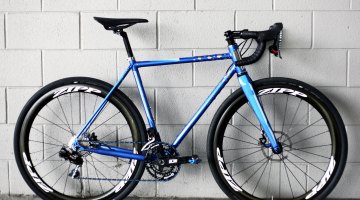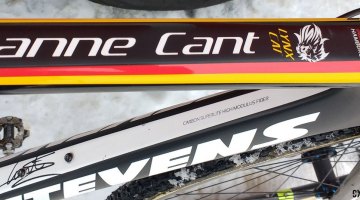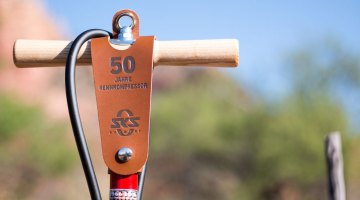Advertisement
Rotor Bike Components has been busy developing a new hydraulic shifting system it is calling Uno, as well as a dual-sided power meter, built around one of the Spanish company's iconic cranks, called the 2INpower. Today we're sharing our (quite lengthy) initial impressions on the innovative Uno drivetrain and brakes, with our typical technical analysis from the perspective of a cyclocross and gravel rider. Stay tuned for more on the 2INpower system.
More Polished Than Prototypes, but Still Rough Around the Edges
It’s worth reiterating that our components were pre-production versions, and there’s hope that some of my nitpicks will be addressed before production units start shipping this summer (most recent published release date is July, but it could be later). We’ll be anxiously awaiting the chance to spend more time on the groupset and see how the final units turn out.
In the meantime, I can only report on what I tested, and there are a few complaints that separate the Rotor Uno groupset from something race-worthy and production-ready. My first observation was that the shift levers literally have a rough, or perhaps sharp, edge on the plastic housing that’s not shielded by the rubber hood, just under the brake lever. When riding in the hoods, I found my fingers brushing this edge on multiple occasions, and can think of a few scenarios where such an exposed, sharp plastic edge could be dangerous. It wouldn’t take much to redesign the rubber hoods to cover this edge.
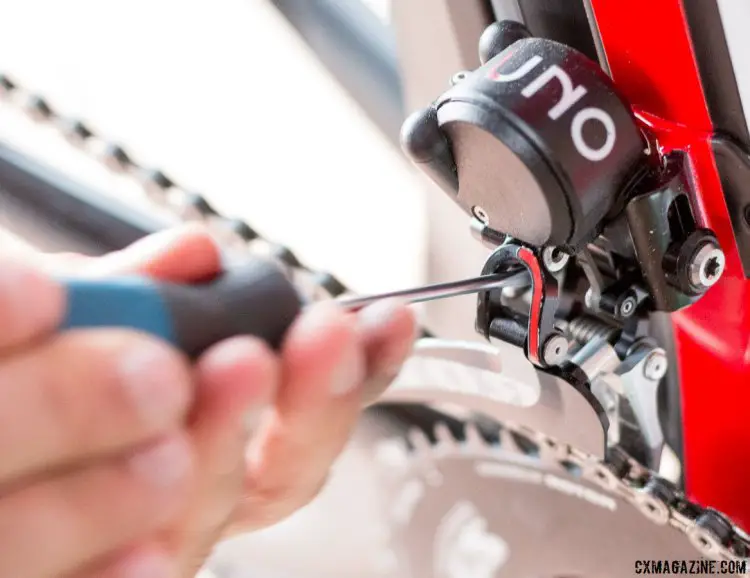
The Uno hydraulic shifting front derailleur, like the rear, offers one limit screw but amount of travel per shift is fixed. © Cyclocross Magazine
My other issue was that the front derailleur trims weren’t quite enough to completely avoid front derailleur chain rub. In the big chainring and the largest two rear cogs, the front derailleur rubbed a bit even after using the trim. I can’t blame it on having powerful legs or a flexy frame, and even Rotor’s Wolfgang Turainsky was unable to completely eliminate the chain rub on a workstand. My dad raised me to fear the dangers of cross-chaining, but with today’s flexible, 11-speed chains, riding in what some might call the 13th gear (big ring, second largest cog) should at least be a noise-free experience. Allowing a bit more movement per trim would be useful here.
My last complaint is a show stopper, but should be viewed in the context that my test bike appeared to be the only one of a dozen bikes to suffer from it. With multishift on or off, in any setting, a long throw and hold of the right shifter would initially execute an appropriate downshift (easier gear) but then end up upshifting one gear when I released the lever.
In SRAM DoubleTap speak, it’s as if I was at the low-end of the cassette for every single downshift, and was still trying to downshift further but would be surprised by an inadvertent upshift. I’d downshift one gear with multishift off, hold the lever down, release it, and it’d upshift one gear. With multishift fully open, I’d downshift four gears at once, release the lever, and it moved me back one gear, effectively only downshifting three gears. This shifting behavior stumped Turainsky, delayed this write-up and required some follow up with Rotor headquarters to understand what was happening and debug. But I eventually got a clear explanation, which I hope is helpful to the company in making some last-minute tweaks.
Apparently, when I shifted slowly, or held the shift lever down, I increased the fluid pressure in the hose beyond normal levels, expanding or stretching the hose a bit in terms of volume. The hose expansion ended up offsetting a bit of the required volume of fluid to be pumped to the derailleur to complete the shift. However, the cassette’s ramps had already grabbed the chain, executed the shift, but the derailleur wasn’t pushed far enough for the indexing pawl to lock into position. Thus the derailleur would upshift after I released the lever.
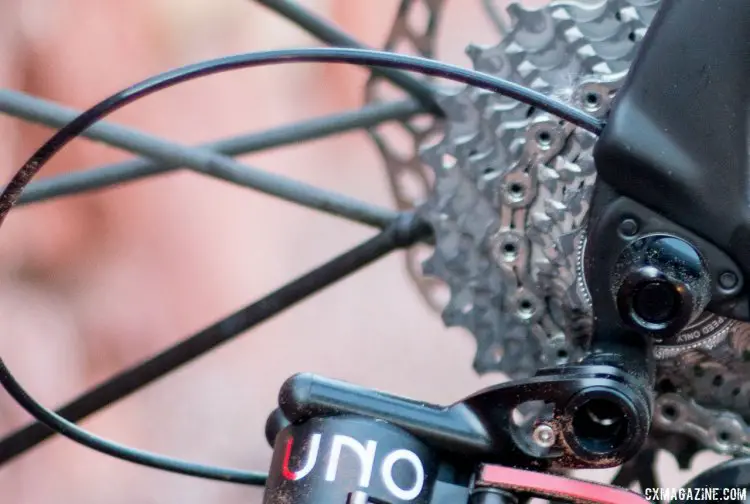
Rotor’s Uno hydraulic rear derailleur has an exposed loop of hydraulic hose that appears to be a bit vulnerable to damage, and the hose may expand more than it should during slow shifting. © Cyclocross Magazine
Despite studying mechanical engineering, I don’t profess to be an expert in hydraulics (machine shop might have been my best class). But I’d guess that minor tweaks like a different hose material, or shorter pawl ramps could address this issue. Still, with a few decades of experience riding cable-pull index shift systems, an equivalent to a cable-tensioning thumbscrew to adjust behavior that we’d normally equate to not enough cable tension sure would be nice. It’s worth noting that all adjustments, whether the multishift, chain stretch or limit screw all require a small hex wrench and can’t be done from the handlebar.
While eliminating the possibility of customers suffering from this same critical shifting issue, I hope Rotor will also protect the loop of hose at the rear derailleur. This is the one area it’s really exposed, and without the metal strands or coils typically seen in cable or hydraulic housing to protect it, it appears extremely vulnerable to kinking or damage. Turainsky noted that one hose did get kinked in shipping, and the system still shifted fine, but for cyclocross, gravel and traveling road cyclists, some additional protection to such a critical element seems essential to maintain the low maintenance benefits of the Uno system that Rotor touts.
Dripping With Potential
I’ll admit to having been skeptical of cartridge bottom brackets, press-fit bearings, 10 and 11-speeds, electronic shifting and thru axles. But I’ll also be the first to admit I’ve not only gotten over all but one of those developments but embraced all but one of them as well. The key is differentiating between “need” and “benefits.” We don’t need hydraulic shifting or another component group option. But Rotor isn’t in the business of fulfilling needs—just wants. The potential of the Spanish company’s hydraulic component group is great, once reliable fluid and hose pressure is achieved and shifting is predictable. Given our cyclocross and gravel focus, I, of course, want a clutch and wide-range capacity as well, but a lightweight, high performance dual-chainring option is still intriguing.
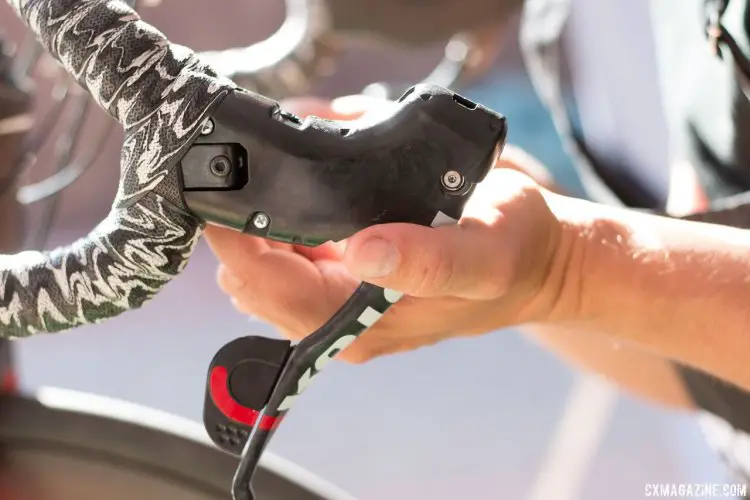
The shifter bodies have a substantial feel, which felt great in large hands, but it could be a bit big for riders and small hands or fingers. Rotor’s Uno hydraulic shifting component group. © Cyclocross Magazine
I’ve been blown away as to how reliable Di2 systems have been, as there are no cables to get contaminated and really little to adjust. Battery life has impressed me. Yet I’ve still forgotten to charge the system a few times, and batteries eventually need to be replaced. If Rotor delivers on its promise for a lightweight, low maintenance system, I’ll push to be at the front of the line to give it a full season’s test. Rotor is positioning this group to be competitive with other brand’s top-flight groups in terms of price and better in terms of weight. Will it be worth the retail price? At a cycling journalist’s salary, it will probably be quite a while before I can comment with first-hand experience on that, but we’re anxiously awaiting a review group to truly test the system in cyclocross and gravel conditions. Stay tuned.
More info: rotorbike.com
See additional photos in our gallery below.























